

Symbol |
Characteristic | Application |
 |
STRAIGHTNESS | Applied to an edge line or axis. For an edge or line the tolerance zone is the area between two parallel lines containing the edge or line. The tolerance value is the distance between the two lines. |
 |
FLATNESS | Applied to a surface. The tolerance zone is the space between two parallel planes. The tolerance value is the distance betweeen the two planes. |
 |
ROUNDNESS | Applied to the cross-section of a cylinder, cone or sphere. The tolerance zone is the angular space between two concentric circles lying in the same plane. The tolerance value is the distance between the two circles. |
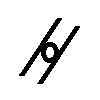 |
CYLINDRICITY | Applied to the surface of a cylinder. Combines roundness, straightness and parallelism. The tolerance zone is the angular space between two coaxial cylinders. The tolerance zone is the radial distance between the two cylinders. |
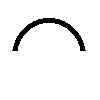 |
PROFILE OF A LINE | Applied to a profile. The tolerance zone is an area defined by two lines that have a constant width normal to the stated profile. The tolerance is the diameter of a series of circles contained between the two lines. The tolerance may be unilateral or bilateral. |
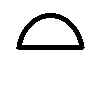 |
PROFILE OF A SURFACE | Applied to a surface. The tolerance zone is a space contained between two surfaces normal to the stated surface. The tolerance value is the diameter of a series of spheres enveloped by the two surfaces. The tolerance may be unilateral or bilateral. |
 |
PARALLELISM | Applied to a line, surface or cylinder. The tolerance zone is the area between two parallel lines or planes, or the space between two parallel cylinders, which must be parallel to the datum feature. The tolerance is the distance beteen the two lines or planes or, in the case of a cylinder, the diameter of the cylinder. |
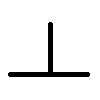 |
SQUARENESS | Applied to a line, surface or cylinder. The tolerance zone is the area between two parallel cylinders, which must be parallel to the datum feature. The tolerance is the distance between the lines or planes. For a cylinder the tolerance zone is the space within a cylinder equal in diameter to the tolerance value and perpendicular to the datum plane. |
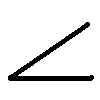 |
ANGULARITY | Applied to a line, surface or cylinder. For a line or surface the tolerance is the area or space between two parallel lines or planes which are perpendicular to the datum surface. The tolerance is the distance between the lines or planes. For a cylinder the tolerance zone is the space within a cylinder equal in diameter to the tolerance value and inclined at a specified angle to the datum feature. |
 |
POSITION | Applied to a circle or cylinder. The tolerance zone is the space within a cylinder equal in diameter to the tolerance value and coaxial with the datum axis. The tolerance limits the deviation of the datum axis from its true position. |
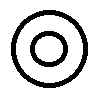 |
CONCENTRICITY | Applied to parallel lines or surfaces. The tolerance zone is the area of space between the lines or surfaces symmetrically disposed in relation to a datum feature. The tolerance value is the distance between the lines or planes. |
 |
SYMMETRY | Applied to a point, axis, line or plane. The tolerance zone definition varies according to the feature. The tolerance value will limit the positional deviation from the specified true position. |
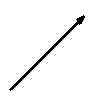 |
RUN OUT | Applied to the surface of a solid of revolution or to a face perpendicular to the axis. The tolerance value indicates the permissible indicator movement during one revolution. |
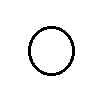 |
MAXIMUM MATERIAL CONDITION | MMC exists when the component or feature contains the maximum amount of material permitted by its dimensional tolerances. When M is included in a tolerance from the tolerance value need only be applied rigorously when the componant or feature is in that condition. When not in that condition the geometric tolerance may be increased up the the differance between the MMC limit and the actual finished size. |